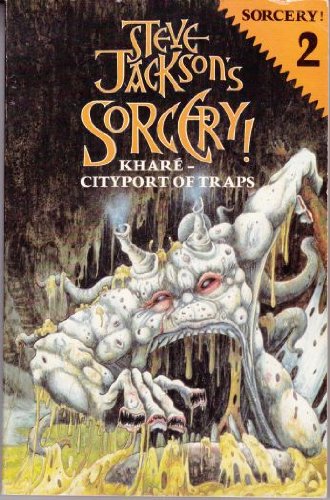If you like Dark Souls, you’ll also like…
Exploring the cultural DNA of the grimmest of grimdark fantasies.

For new players, every moment in a Dark Souls game can feel like a puzzle. Where am I? Where do I go? How do I stop dying every few seconds? Why is that guy just sitting there? FromSoftware’s now-classic action-RPG gleefully enjoys its status as one of gaming’s ultimate experiential labyrinths. To lose yourself in it is precisely the point.
In my first encounter with Dark Souls I quickly learned that simply avoiding death wasn’t a path to success. I was meant to overcome this seemingly implacable force through learning. As the famously dark-humored writer Franz Kafka once observed—”I usually solve problems by letting them devour me." And in Dark Souls, maybe I laughed at my failure a little bit along the way too.
In this edition of ‘If you like,’ I set out to confront the monsters, landscapes, and deadly mysteries from other media that spring to mind when tackling Dark Souls’ black towers and blind corridors. In these books, films, comics, and artwork the promise of death is always present, but also deeply entertaining.
Prophet, by numerous artists, writers, and colorists

If Dark Souls were ever to take a sci-fi turn in its traditional, man-versus-alienating-world approach, it might look something like the magnificent comic series Prophet. Essentially a barbarian tale set in outer space, the initial journey of John Prophet takes place on a vast, decaying world full of strange creatures and technologies that in their weirdness, can sometimes feel like magic.
Drawn and written by a variety of artists and writers, the Image reboot of the 1980s, Rob Liefeld character was met with much appreciation. Alongside Dark Souls, I can say it shares a healthy appreciation for violence, damaged bodies, and bladed weapons. At least in its first collected volume, Remission, the series also expresses a humorous—maybe even crass—attitude towards death. Really, death is everywhere. Just look around.
Dragonslayer, directed by Matthew Robbins
It’s already enough that Guillermo del Toro has gone on record saying 1981’s Dragonslayer contains “perhaps one of the most perfect creature designs ever made.” But it also helps that like him, George RR Martin has claimed that the film’s hungry monster, Vermithrax Pejorative, is simply “the best dragon ever put on film.” Let’s face it, if we’re writing about Dark Souls we’re also writing about all the monsters waiting to eat, skewer, or incinerate us. And in its titular creature, the criminally underrated Dragonslayer serves up a great villain.
On the surface a straightforward hero quest, the film does a lot to subvert its own story and give us multiple shades of grey instead of a black and white retelling of swords, sorcery, and dragon fire. It might be a bit tough to track down, but it’s worth it to see firsthand how the “darker” turn of recent fantasy culture was so expertly foreshadowed decades ago by a film from The Walt Disney Company.
Keep up to date with the most important stories and the best deals, as picked by the PC Gamer team.
Steve Jackson’s Sorcery!, by Steve Jackson, art by John Blanche

While fans of the Souls games often point to the well-known Japanese manga and anime series Berserk as a touchstone in the creative history of Dark Souls, other influences may have played a role as well. At the very least, the Fighting Fantasy series of gamebooks created by Steve Jackson and Ian Livingstone trod similar ground, if only in text form. And within that universe, the four-book collection Sorcery! stands out for its inventive weirdness and narrative strength.
A choose-your-own-adventure-style RPG, the stories create twisting paths that require careful decision making and more often than not, a little luck. But during your journey you’ll get to take in what for me is the lasting legacy of Sorcery!—the artwork of John Blanche. Perhaps better known for his work in the Warhammer universe, his images in Sorcery! have stayed with me since I first encountered them more than 20 years ago. It’s an approach to fantasy art that creates layers upon layers of meaning. And like Dark Souls, the Fighting Fantasy books were meant to be replayed. This required an art style whose bizarre texture could stand up to repeated encounters. Blanche achieves that.
Black Angel, directed by Roger Christian
Another film from the past that’s charted an awkward course into the present, Roger Christian’s 1980 short film Black Angel was originally given a limited release as the opening act to The Empire Strikes Back in a handful of countries. But even given its relative obscurity, its approach to fantasy was influential. Like Dark Souls, the world of Black Angel seems to churn with a surging dread while at the same time being capable of producing vistas of uncommon beauty.
Christian was art director on Alien and Star Wars Episode IV: A New Hope prior to making his directorial debut with Black Angel, and his short film is at its most compelling on a visual level. Shot entirely amongst Scotland’s craggy hills and broken castles, the movie achieves an iconic look given its obviously modest ambitions. It’s also fascinating to see how Christian’s contributions to the some of the best 'used-future' science fiction designs also surface in a medieval setting. The entire film is available above, including an introduction from Christian himself.
Patrick currently works for Hinterland Studios, which is making The Long Dark. For more installments of ‘If you like...’, check out his recommendations for Elite: Dangerous, Metal Gear Solid 5, The Witcher, Mass Effect, Skyrim, and Deus Ex.

